Goblins: Antisocial, Grotesque, Ugly And Vengeful Fairy Creatures In Ancient Beliefs
A. Sutherland - AncientPages.com - In ancient legends of European cultures, there are numerous references to antisocial and ugly creatures called – goblins. However, they can also be found in the folklore of people living outside the European continent.
Generally, all tales describe them as ugly, strange, grotesque fairy creatures capable of mischievous and often evil behavior. They are associated with troubles.
Goblin Has Many Names
The name 'goblin' may derive from the Greek 'kobalos,' which means 'villain' (or 'rogue'). Its Latin name is 'cobalus' while its French name is 'gobelin,' and in German tales, this creature is 'cobalt.' Today, we know it under its English name: 'goblin,' and this name characterizes evil and malicious spirits.
Tradition has it that they originate from a particular tribe of gnomes ruled by Ghob, and according to ancient tradition, other gnomes called them – 'ghob-lings.'
Appearance, Their Place Of Living What Is Their Occupation
Goblins are creatures having human characteristics, but their look is unappealing.
Goblins, called duendes in Spain, Portugal and South America. Image credit: Francisco Goya (1799) Public Domain
They are small (dwarfish) and grotesque, about the size of a fairy tale dwarf; however, giant goblins, whose height can reach two meters, are mentioned in the mythology of the Germanic peoples. Goblins have enormous ears and noses, dark skin, and yellow, filthy teeth.
Goblins prefer to dwell in caves, rock crevices, and roots of ancient trees in isolated places and hardly accessible mountain regions. They smash pots, pull sleeping people out of bed, pull pajamas off, and make noises while moving furniture at night. They can even enter houses or disturb people by knocking on doors and walls and immediately disappear.
Statue of a goblin. Credit: Public domain
Unfamiliar with the people's concept of ethics and morality, the goblins do bad things just for fun.
Goblins usually do not stay in one place for too long. They try to find a place to live where the humans cannot spot them. Legends say they stay home hiding during the day and go out roaming at night once all the humans are in bed. Goblins like to cause trouble, and the nighttime gives the creatures a perfect opportunity to wreak havoc for humanity without getting busted.
Goblins are said to be lazy, tiny creatures that enjoy doing nothing, and in case of danger, they prefer to escape as soon as possible and hide. In addition to playing tricks, some goblins are shapeshifters, taking on animal form but avoiding taking a human form.
They are said to be capable of casting spells on a person, creating disturbing nightmares to trouble people, or even stealing away their children and, occasionally, women.
The children are sometimes replaced with goblin babies or changelings.
A model of Goblin from the Harry Potter series. Credit: Wikipedia, CC BY 2.0
In the famous Harry Potter series by J.K. Rowling, goblins have been featured in literature and several fantasy movies and portrayed as small, greedy, and cunning creatures that run Gringotts Bank in Diagon Alley.
Goblin Has A Cousin - Hobgoblin
The goblin's literary relative is the hobgoblin, a creature whose character is slightly more pleasant. A popular hobgoblin is Puck, also known as Robin Goodfellow. The idea of hobgoblins is associated with the advent of Christianity. It was necessary to separate the evil from good. While the hobgoblins are perceived positively, the goblins are blamed for everything wrong.
Goblins gave rise to the image of gremlins that later appeared in modern folklore.
In some regions of Borneo, people consider these creatures are the souls of the dead. The Dyaks tribe of Borneo believes their forests are full of hostile goblins that are evil spirits. These dangerous shapeshifters lurk in deep, dark woods, ready to assume weird shapes whenever possible.
Ancient beliefs of the Dyaks have survived until today, and they warn about walking the forest alone. The goblins can steal a person's soul and leave them unaware of the loss.
Written by – A. Sutherland - AncientPages.com Senior Staff Writer
Updated on August 21, 2022
Copyright © AncientPages.com All rights reserved. This material may not be published, broadcast, rewritten or redistributed in whole or part without the express written permission of AncientPages.com
More From Ancient Pages
-
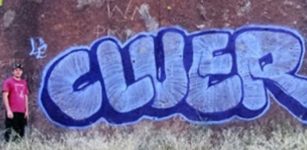 Two Men Sentenced To Prison For Vandalism Of 4,000-Year-Old Petroglyphs In Nevada
Archaeology | Nov 12, 2022
Two Men Sentenced To Prison For Vandalism Of 4,000-Year-Old Petroglyphs In Nevada
Archaeology | Nov 12, 2022 -
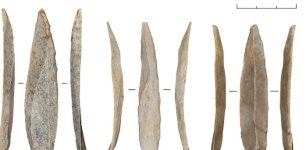 Mass Production Of Stone Bladelets Led To A Cultural Shift In Paleolithic Levant
Archaeology | Jan 7, 2023
Mass Production Of Stone Bladelets Led To A Cultural Shift In Paleolithic Levant
Archaeology | Jan 7, 2023 -
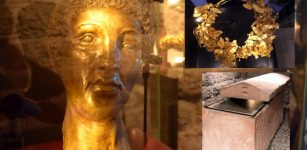 Carian Princess’ Tomb, Golden Artifacts – Now On Display In Renovated Hall Of Bodrum Castle
Artifacts | Aug 27, 2020
Carian Princess’ Tomb, Golden Artifacts – Now On Display In Renovated Hall Of Bodrum Castle
Artifacts | Aug 27, 2020 -
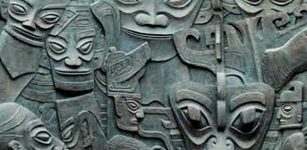 Baffling Sanxingdui Civilization: Why Did These People Have Fascination For Eyes?
Civilizations | Mar 21, 2017
Baffling Sanxingdui Civilization: Why Did These People Have Fascination For Eyes?
Civilizations | Mar 21, 2017 -
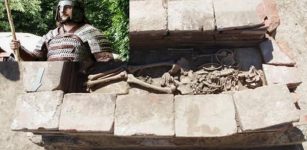 Rare Discovery: Remains Of An Avar Warrior And A Belt Unearthed In Vinkovci, Croatia
Archaeology | May 3, 2020
Rare Discovery: Remains Of An Avar Warrior And A Belt Unearthed In Vinkovci, Croatia
Archaeology | May 3, 2020 -
 Significance Of Secret And Powerful Number 108 That Has Accompanied Humankind For Thousands Of Years
Ancient Symbols | Jun 19, 2017
Significance Of Secret And Powerful Number 108 That Has Accompanied Humankind For Thousands Of Years
Ancient Symbols | Jun 19, 2017 -
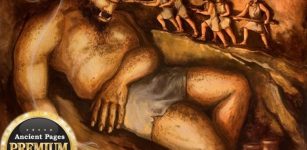 Hidden Giant Tombs In Armenia Remain An Ancient Mystery
Featured Stories | Nov 9, 2017
Hidden Giant Tombs In Armenia Remain An Ancient Mystery
Featured Stories | Nov 9, 2017 -
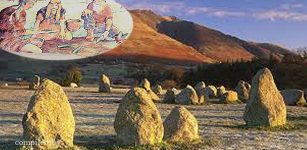 Castlerigg Stone Circle: One Of Britain’s Most Important And Earliest Stone Circles
Featured Stories | Apr 16, 2019
Castlerigg Stone Circle: One Of Britain’s Most Important And Earliest Stone Circles
Featured Stories | Apr 16, 2019 -
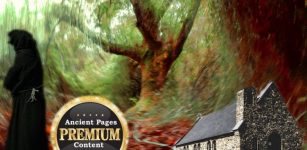 Mysterious Time Slips Near An Ancient Church – Reported
Featured Stories | Oct 23, 2018
Mysterious Time Slips Near An Ancient Church – Reported
Featured Stories | Oct 23, 2018 -
 Clues What Tiggered Climate Change 8,000 Years Ago Found In Scotland
News | Sep 15, 2023
Clues What Tiggered Climate Change 8,000 Years Ago Found In Scotland
News | Sep 15, 2023 -
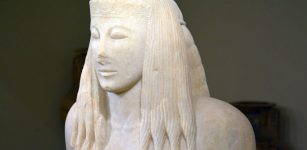 ‘Supernatural’ Sized Daughter Of Thera: Rare Masterpiece Of Greek Antiquity Revealed To The Public
Artifacts | Oct 1, 2022
‘Supernatural’ Sized Daughter Of Thera: Rare Masterpiece Of Greek Antiquity Revealed To The Public
Artifacts | Oct 1, 2022 -
 On This Day In History: American Archaeologist George A. Reisner Was Born – On Nov 5, 1867
News | Nov 5, 2016
On This Day In History: American Archaeologist George A. Reisner Was Born – On Nov 5, 1867
News | Nov 5, 2016 -
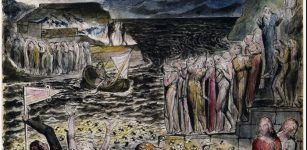 Tartarus – The Land Of The Dead – Mysterious Underground World
Featured Stories | Sep 13, 2015
Tartarus – The Land Of The Dead – Mysterious Underground World
Featured Stories | Sep 13, 2015 -
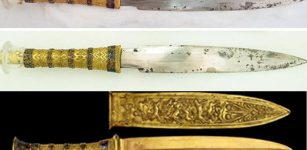 King Tut’s Cosmic Dagger Was Not Made In Egypt – New Study Reveals
Archaeology | Feb 24, 2022
King Tut’s Cosmic Dagger Was Not Made In Egypt – New Study Reveals
Archaeology | Feb 24, 2022 -
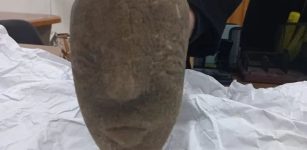 Rare 4,500-Year-Old Stone Sculpture Of Canaanite Goddess Anat Found By Farmer In Gaza Strip
Archaeology | Apr 26, 2022
Rare 4,500-Year-Old Stone Sculpture Of Canaanite Goddess Anat Found By Farmer In Gaza Strip
Archaeology | Apr 26, 2022 -
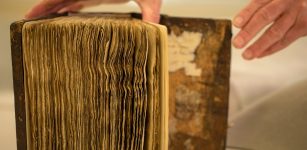 Hidden Text Of Medical Book By Doctor Galen Read For The First Time In 1000 Years
Archaeology | Mar 24, 2018
Hidden Text Of Medical Book By Doctor Galen Read For The First Time In 1000 Years
Archaeology | Mar 24, 2018 -
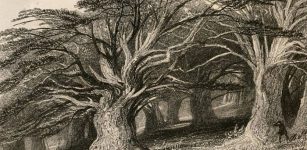 Yew: Mysterious Ominous And Sacred Tree Revered By Our Ancestors Since The Dawn Of Civilization
Featured Stories | Feb 8, 2022
Yew: Mysterious Ominous And Sacred Tree Revered By Our Ancestors Since The Dawn Of Civilization
Featured Stories | Feb 8, 2022 -
 Being A Roman Emperor Was Dangerous – Only One Of Four Died Of Natural Causes
Archaeology | Nov 12, 2021
Being A Roman Emperor Was Dangerous – Only One Of Four Died Of Natural Causes
Archaeology | Nov 12, 2021 -
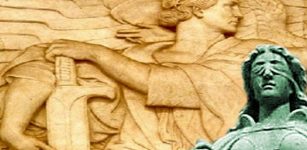 Lady Justice (Justitia): Legal And Philosophical Concept Produced In Remote Antiquity
Featured Stories | Nov 7, 2019
Lady Justice (Justitia): Legal And Philosophical Concept Produced In Remote Antiquity
Featured Stories | Nov 7, 2019 -
 Pictograms: First Written Accounts Of Earthquakes In Pre-Hispanic Mexico
Archaeology | Aug 27, 2021
Pictograms: First Written Accounts Of Earthquakes In Pre-Hispanic Mexico
Archaeology | Aug 27, 2021

